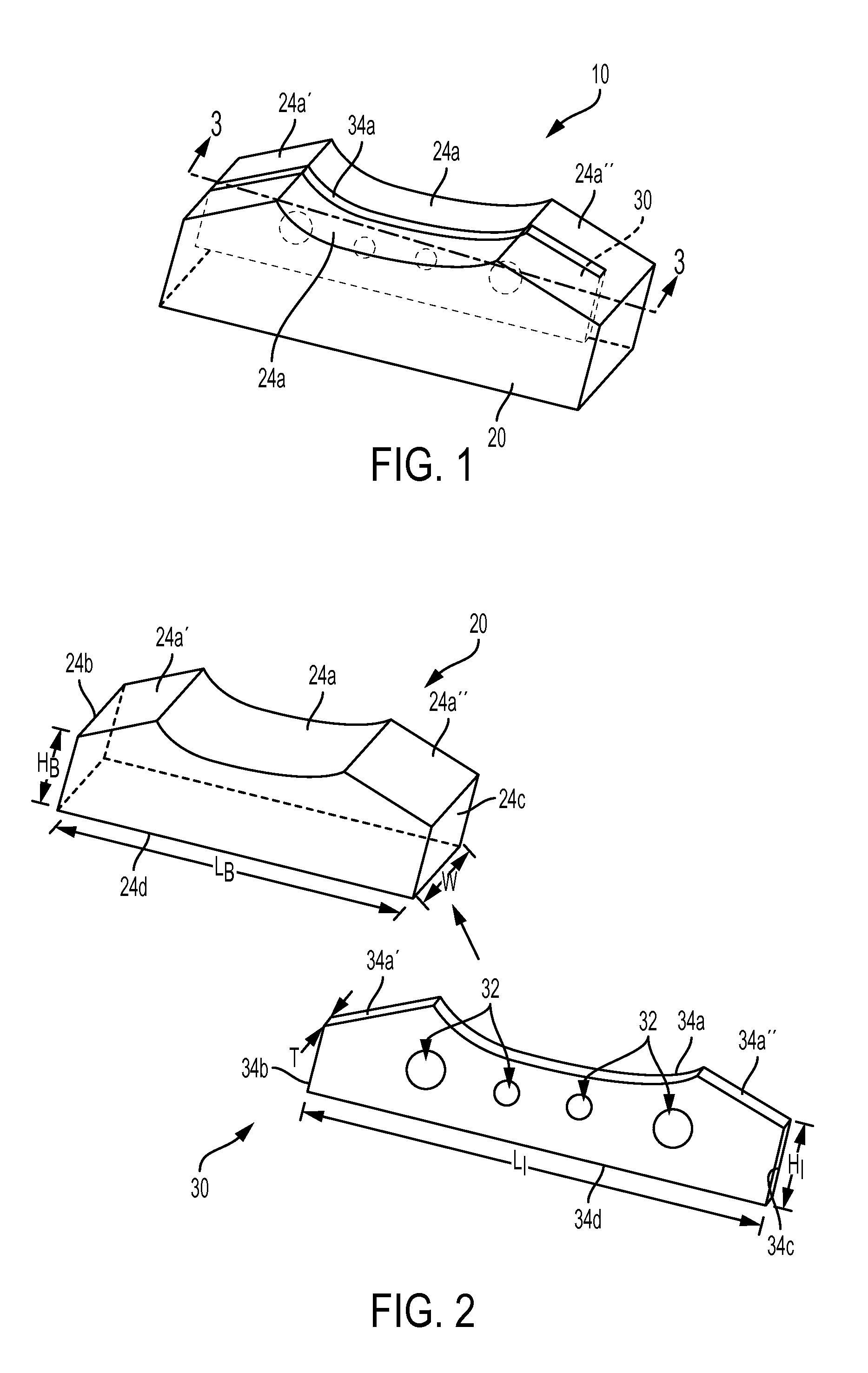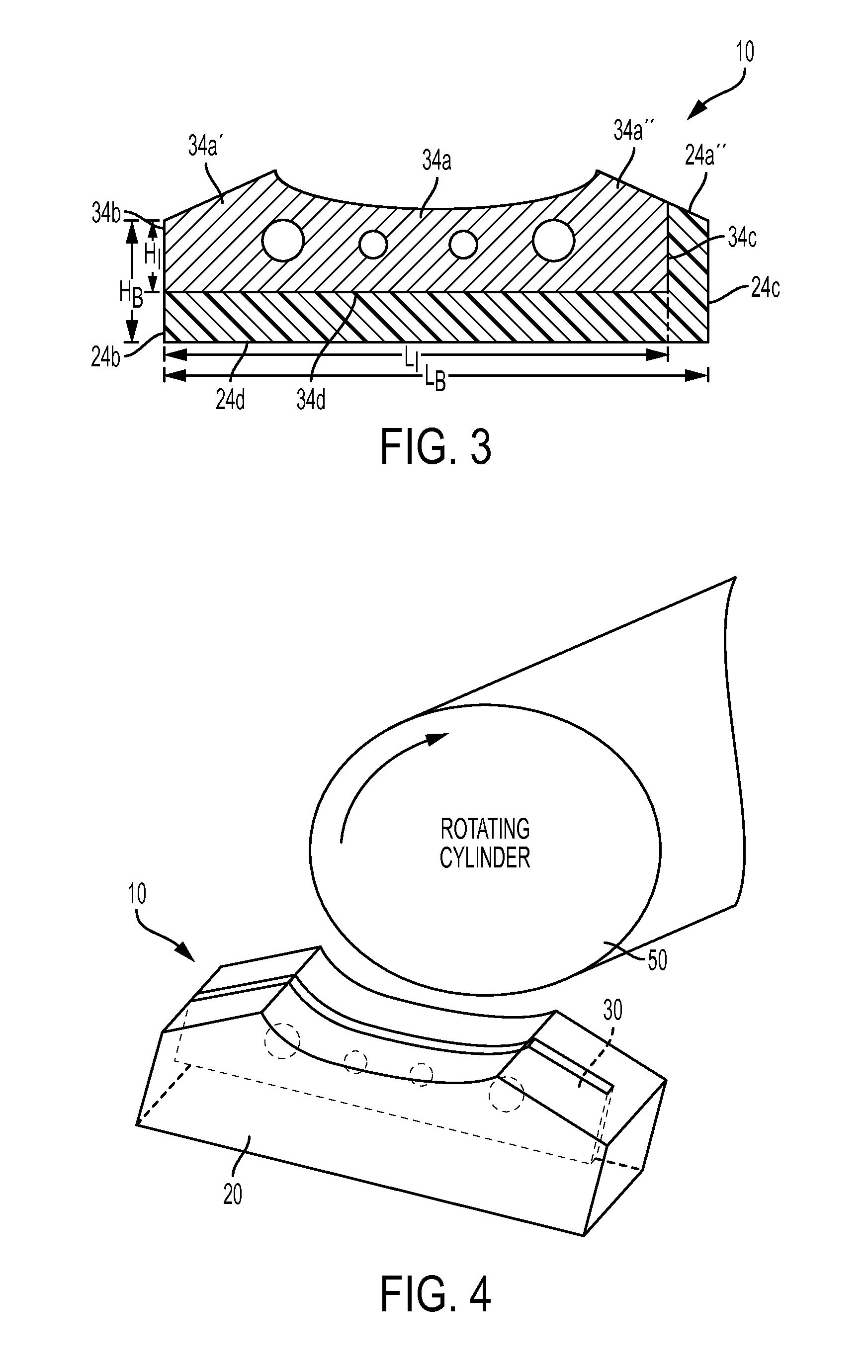End seal with insert for chambered doctor blade assembly
a technology of end seals and inserts, which is applied in the direction of electrographic process equipment, instruments, printing, etc., can solve the problems of premature wear, ink leakage almost immediately, and the normal life expectancy of the seal is shortened considerably, so as to prolong the operational life improve the structural integrity of the end seal, and improve the sealing properties
- Summary
- Abstract
- Description
- Claims
- Application Information
AI Technical Summary
Benefits of technology
Problems solved by technology
Method used
Image
Examples
Embodiment Construction
[0019]Referring now to the drawing, there is seen in FIGS. 1-4 an embodiment of the inventive end seal designated generally by the reference numeral 10. Seal 10 includes a seal body 20 adapted to carry an integral abrasion resistant insert 30. Seal body 20 is preferably formed from a from a rigid yet resilient material (e.g., about 25-90 Durometer Shore A, more preferably about 60-80 Shore A, and yet more preferably about 70 Shore A) which may be injection or compression molded from an appropriate material such as, for example, thermoplastic materials or thermoset materials, EPDM rubber, Buna-N rubber, Natural Rubber, SBR Rubber, Viton, of a rubber compound that has been blended with performance enhancing additives having like characteristics, although other manufacturing processes are of course possible (e.g., cast molding, machining, SLA, vulcanization, vacuum molding, rapid prototyping, mechanical die cutting, water jet cutting, etc.). For the sake of simplicity, the material com...
PUM
 Login to View More
Login to View More Abstract
Description
Claims
Application Information
 Login to View More
Login to View More - Generate Ideas
- Intellectual Property
- Life Sciences
- Materials
- Tech Scout
- Unparalleled Data Quality
- Higher Quality Content
- 60% Fewer Hallucinations
Browse by: Latest US Patents, China's latest patents, Technical Efficacy Thesaurus, Application Domain, Technology Topic, Popular Technical Reports.
© 2025 PatSnap. All rights reserved.Legal|Privacy policy|Modern Slavery Act Transparency Statement|Sitemap|About US| Contact US: help@patsnap.com



